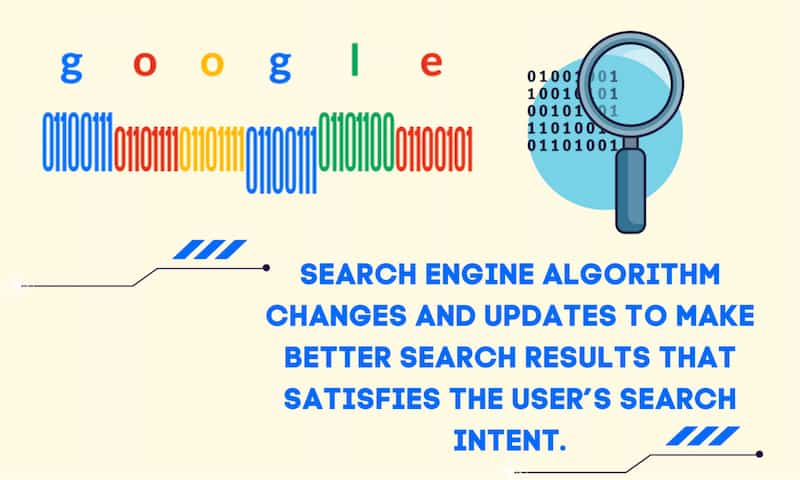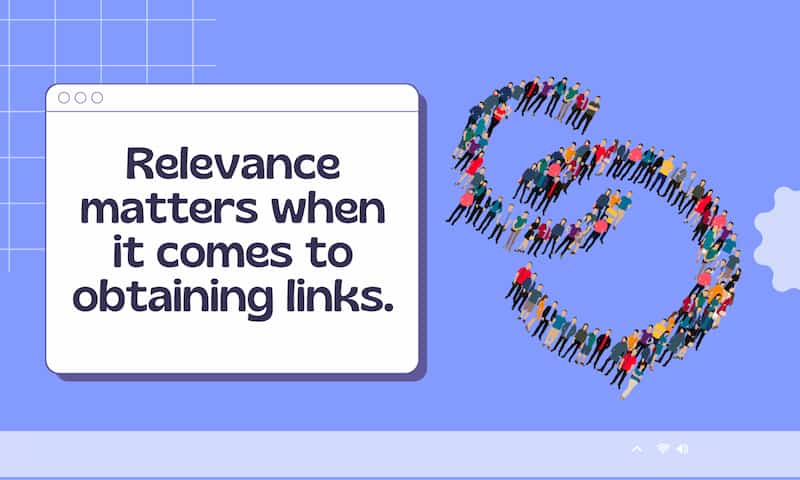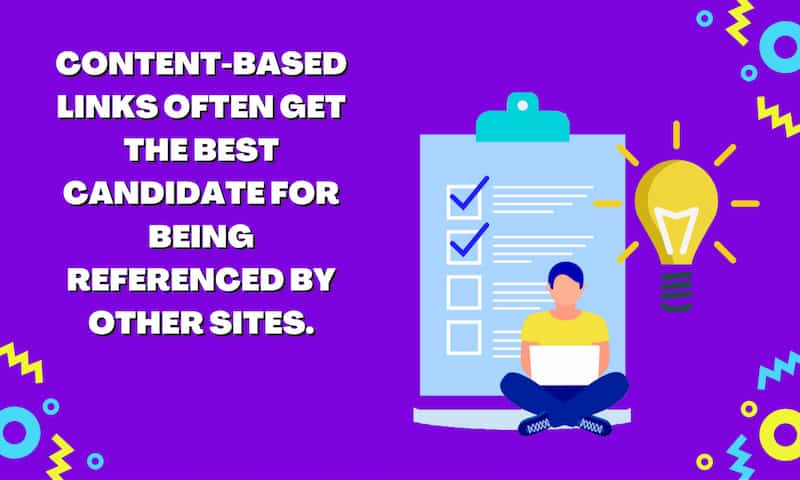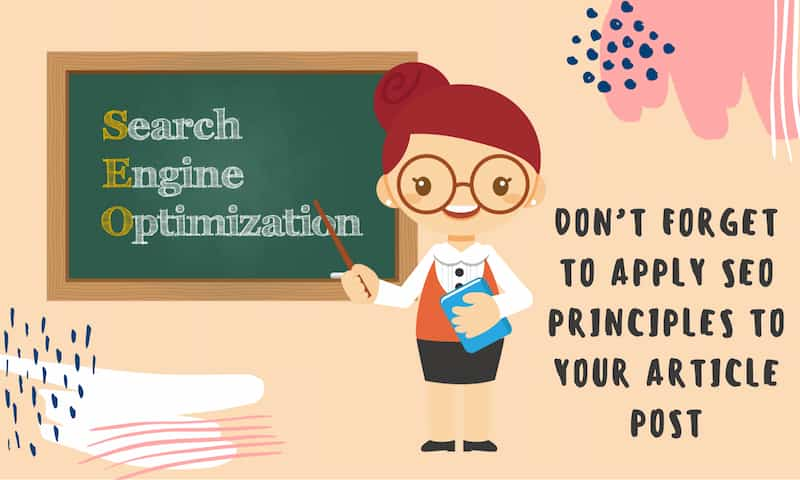The Role of Relevance in SEO: Building Quality Backlinks
Backlinks are still important, even in the face of the AI search revolution. They’ve always been the backbone of a good reputation and SEO strategy. While things are certainly more nuanced today, a solid link profile is still worth its weight in gold.
As a webmaster, your website’s SEO can be compared to self-defense. You have to know how to fight off the algorithm that tries to engage in battle with you almost every waking moment.
With the introduction of Panda, Penguin, Hummingbird, Pigeon, Bard, AI-powered Bing, and more, SEO has taken on a new dimension.
You may not be able to employ the same tactics that worked in the past simply because the search engine’s focus has changed from previously ranking websites on their relevance to search queries towards rewarding high-quality content in an attempt to separate it from spam and advertising.
This article will share how to obtain backlinks by making your web pages link-worthy to ultimately drive organic traffic to your website.
The early days of SEO
In the past, long-form content and the right amount of keywords were all you needed to rank high in search engine results. This turned into keyword spamming, a technique that continues today amongst inexperienced webmasters, which is a big NO in today’s SEO standards. Nowadays, most search engines can easily detect this and penalize sites that spam keywords.
Why do search engine algorithms change often?
Search engines usually update their algorithms based on the patterns of the people that use them. The goal is to provide an easier way to find answers to questions, improve user experience and provide overall better and more accurate search results. Google focuses more on providing search results that connect, a result that is more relevant to the user’s intent. The goal of SEO services is to help websites become ideal candidates for both machine (algorithm) and human readers.
Most search engines nowadays, specifically Google, prefer websites that are more relevant and helpful. These helpful websites:
- Are easily indexed: Web crawlers can locate them and collect bits of information or data to understand what your site is about
- Give that website or webpage a huge boost
- Are interconnected (via backlinks) with helpful websites with a high chance of earning better rankings
In order to connect your site to another helpful site, backlinking has become a popular strategy. Most web marketing professionals agree that the more backlinks you have, the higher it will rank in Google. Some webpages began to have countless backlinks to their websites and began having better search result rankings as a result.
LEARN MORE: The Benefits Of Earning Backlinks To Your Website
However, Google’s algorithms are becoming stricter when indexing web pages with backlinks. SEO techniques now have a sophisticated process for obtaining backlinks. These are some of the most well-known and standard factors to expect from links.
Relevance
Relevance is about how closely connected something is to another. Today, the algorithm seeks to reward websites that are considered helpful among users and to gauge how helpful a website or webpage can be. Relevance is used as a measuring factor. For example, a link found on a webpage that will redirect them to another site/page should provide the answers for users, or at least it should address what they are looking for. Additionally, for content to be relevant, it should be perceived as useful and informative.
Relevance is a major ranking factor for websites. It is the reason why a lot of SEO techniques aim to improve relevance via:
- Links/backlinks
- Content
- Images
- Videos
Anchor text
The anchor text (text containing the web link) should include a keyword that is directly related to your content. Anchor texts are crucial since they provide context for search engines and people about a linked page.
The significance of the two factors (relevance and anchor text) has paved the way for better link-building approaches. You’ll notice that links that have appropriate anchor text and higher relevance lead you to web pages that have high-quality content. With superior on-page SEO, content, and better user experience, you are on the verge of making full use of link building to drive organic traffic.
Make your website link-worthy with excellent content
One of the most straightforward ways to make your website link-worthy is to have quality and relevant content that satisfies your target user’s search intent. Search intent is simply about describing the user’s purpose of an online search. Each of us has reasons why we conduct specific searches online. So, whether you’re writing marketing material for your product or service or writing a blog, when it comes to SEO marketing, your content should be able to satisfy a user’s search intent.
To produce excellent relevant content that satisfies a user’s search intent would be:
- Solving the problem
- Adding keywords to your content’s meta description
- Creating a compelling headline and summarized statement
- Make the content as long as it needs to be (but not too crazy long)
If you want to learn the essence of SEO link-building, your effort should be highly based on the content aspect. After all, if your content is rich with information and is well-presented, your webpage is considered quality as well. If your site is full of rich quality content, other websites will reference back to your webpage – making your webpage link-worthy. Content-driven links often get the best candidate for being used for reference. Hence, you should establish a relationship to know what makes web content relevant and what makes it good in quality to acquire links.
Write based on what you know
Write consistently (but don’t spam). Being able to write consistently requires you to check if the format, grammar, punctuation, ideas, and points of view are followed and applied from start to finish.
It would be best to focus on well-known subjects that refer to your target audience/market. If your articles are helpful and informative, you can send them to other websites that accept published content relevant to your niche.
Segment articles into sections to make them easier to read
Dividing articles into parts is an excellent means to make a subject simpler to absorb. It’s not just an SEO method, but it should also be a rule of thumb for writing lengthy content. It helps when you write an overview and table of contents, especially if it’s a lengthy article.
Link quality websites to your article
Use links within your article to expand and add helpful resources about certain ideas, such as:
- Recommendation pages
- News resources
- Online forums
Similarly, your links must be well-specified and easy to identify with the help of anchor text.
Apply SEO to your article
It is essential to create titles and headings that connect to what the article is talking about. Also, you need to maintain an even distribution of relevant keywords in no more than 1-2 keywords per every 100 words.
Apart from applying SEO techniques, make sure that it is easy to understand and easy to read. Furthermore, you can hire assistance from a local SEO agency to maximize the impact of applying SEO to your webpage content.
Final thoughts
Always provide concrete knowledge to your readers. After all, SEO is only a technique to make your website relevant and helpful for the human audience. It would be best to concentrate on one of the most crucial factors, laying out the essential points and ensuring your message is understood.
Tags: Business Reputation Marketing, Reputation Management, SEO.






